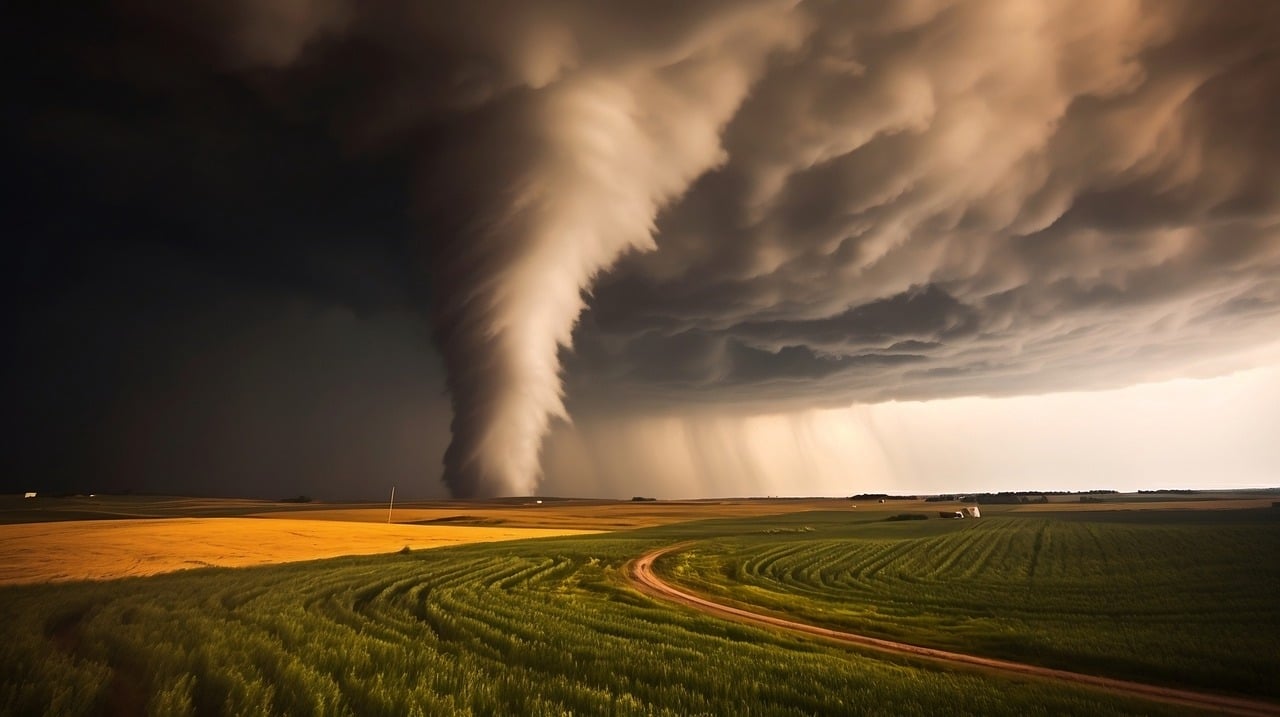Overview of the Tornado Incident
On [date], Lancaster, Pennsylvania experienced a severe weather event as a tornado touched down, causing significant disruption and damage. The tornado, which was spotted in Mahanoy City, has placed Schuylkill County on high alert as authorities and residents brace for potential further impacts. This article provides a comprehensive overview of the incident, the immediate aftermath, and ongoing safety measures.
Tornado Formation and Path
Weather Conditions Leading to the Tornado
The tornado formed under specific atmospheric conditions conducive to severe weather. A combination of warm, moist air from the Gulf of Mexico colliding with a cold front from the north created a volatile environment. The following factors contributed to the tornado’s development:
- Warm, Moist Air: A surge of warm, humid air created an unstable atmosphere.
- Cold Front: The advancing cold front acted as a catalyst, triggering severe thunderstorms.
- Wind Shear: Variations in wind speed and direction with altitude provided the necessary rotation.
Path of the Tornado
The tornado’s path began in Mahanoy City and moved towards Lancaster, cutting a swath through several communities. Initial reports indicate the tornado traveled approximately [number] miles, with a width of [number] yards. The damage path included both urban and rural areas, affecting homes, businesses, and infrastructure.
Immediate Impact and Damage Assessment
Structural Damage
The tornado caused extensive structural damage, with numerous buildings suffering partial to total destruction. Roofs were torn off, windows shattered, and in some cases, entire structures were leveled. Preliminary damage assessments indicate the following:
- Residential Areas: Significant damage to homes, with many rendered uninhabitable.
- Commercial Properties: Businesses experienced severe impacts, leading to temporary closures and economic disruption.
- Public Infrastructure: Roads, power lines, and public buildings such as schools and hospitals were affected, leading to widespread outages and service interruptions.
Casualties and Injuries
Emergency services responded swiftly to the incident, with first responders conducting search and rescue operations.
Response and Recovery Efforts
Emergency Response
Local authorities and emergency services have mobilized to address the immediate needs of affected communities. Key response measures include:
- Search and Rescue: Teams are working tirelessly to locate and assist trapped individuals.
- Medical Aid: Hospitals and emergency medical services are providing care to the injured.
- Shelter and Relief: Temporary shelters have been established, and relief supplies are being distributed.
Recovery Plans
Long-term recovery efforts are being coordinated by local, state, and federal agencies. These plans focus on rebuilding and restoring normalcy to the affected areas. Key initiatives include:
- Infrastructure Repair: Rapid restoration of essential services such as electricity, water, and transportation.
- Financial Aid: Assistance programs for homeowners and businesses to rebuild and recover.
- Community Support: Counseling and support services for affected individuals to address the psychological impact of the disaster.
Safety Measures and Preparedness
Tornado Preparedness Tips
In light of the recent tornado, it is crucial for residents to stay informed and prepared for future severe weather events. Recommended safety measures include:
- Emergency Kits: Assemble emergency kits with essential supplies such as water, food, medications, and important documents.
- Safe Spaces: Identify and prepare safe spaces within homes or buildings where individuals can seek shelter during a tornado.
- Weather Alerts: Stay updated with weather forecasts and heed warnings from meteorological agencies and local authorities.
- Community Plans: Participate in community preparedness programs and drills to enhance collective response capabilities.
Enhancing Community Resilience
Building community resilience involves a collective effort to improve preparedness and response to natural disasters. Key strategies include:
- Public Education: Regular public education campaigns to raise awareness about tornado safety and preparedness.
- Infrastructure Improvements: Investing in resilient infrastructure to withstand severe weather events.
- Emergency Response Training: Continuous training for emergency responders to enhance their capabilities in dealing with natural disasters.
Conclusion
The tornado that struck Lancaster, Pennsylvania, serves as a stark reminder of the power and unpredictability of nature. While the immediate impact has been devastating, the community’s resilience and coordinated response efforts are paving the way for recovery. By enhancing preparedness and investing in resilient infrastructure, we can mitigate the effects of such natural disasters in the future. Stay informed, stay prepared, and stay safe.

